In the late nineteenth century, steam engines were the predominate power source for trains and industrial applications. There were internal combustion engines as well, but were typically quite large. The challenge was to build an engine on a small enough scale to power a small vehicle for personal transport. Karl Benz built the Benz Patent-Mortorwagen in 1885. It is regarded as being the worlds first automobile. In 1896 Henry Ford built his quadricycle. There were many other inventors working on their own creations and by 1897 there were already many successful automobiles and you can see some of them on this web page. The challenge for many of these inventors was to build an engine small enough for a practical car. This one was built by Louis LaDuke of Bessemer, Michigan. It is on display at the Door Prairie Museum in LaPorte, Indiana and listed for sale on eBay. Bidding at this time is at $1,750 with no reserve. It was last driven in the 1950s and ’60s in parades. There is, of course, some doubt as to its authenticity. The newspaper that would have covered the car would be the Ironwood News Record of Gogebic County. Perhaps a search of their archives might show something.
The engine is homemade, perhaps from an air compressor. The seller has tried to get it running. It fires but will not keep running.
Here’s the belt drive. You can see here how simply this wagon was built using timber and bolts.
This may be the oldest car ever featured here on Barn Finds. There were many simple automobiles built in the 1890s. Not many have survived though. There is some question as to whether this one is real, but I believe it might be. Without proof, it’s probably not worth much. It’s typical of the many cars that inventors were building in the last decades of the nineteenth century. We take it for granted now, but remember the first thing you drove and the thrill of moving along in a vehicle that you controlled? Now, imagine if you’d never seen a car of any kind. It wasn’t very fast and it was uncomfortable but what a thrill it must have been!





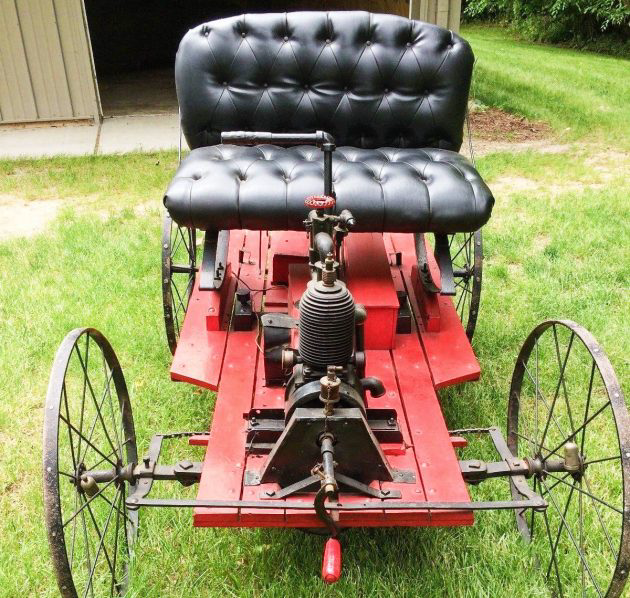

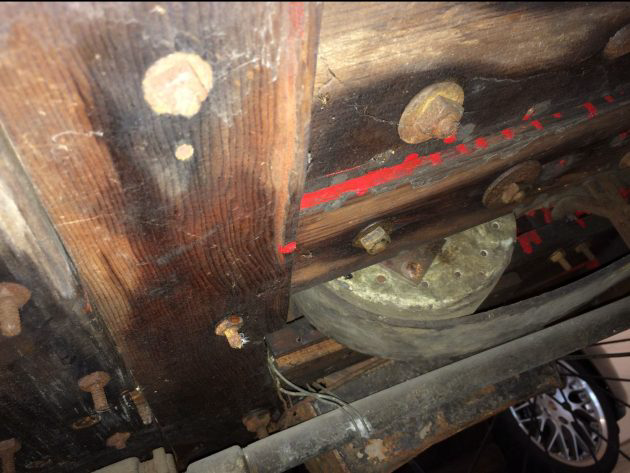

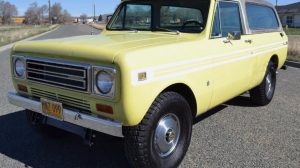

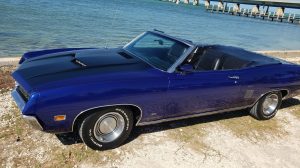
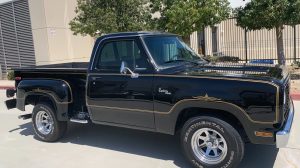


Thanks David for the slight departure. It”s a breath of fresh air. I want to hear from geomechs on this one. While there’s no doubt it’s from the turn of the last century, square head bolts, stone flywheel, that has got to be THE crudest carburetor I’ve ever seen. Gravity feed, to a freakin’ spigot, and in the hole. And what is that tank underneath? No electrics to what appears to be a spark plug. I’m sure it had hard rubber tires at one time. I’ve said it before, and I’ll say it again,,,never underestimate the resourcefulness of a “Yooper”.
A Michigan Tech professor maybe.
Defiantly missing the tires……..not a difficult fix.
Hi Howard. I’ll try this again but it seems that this page doesn’t want any of my inputs, drivel or snide comments. I sent a message to Jesse to see if there’s a repair other than: STAY AWAY!!! Anyways, here goes: The engine looks like a manufactured engine, possibly a Maytag (yes, Maytag built more than washing machines; I don’t know if the repairman was the loneliest guy in town back then though). That plug on top looks like a glowplug (remember the radio-controlled airplanes?) that one would attach a battery to in order to get the initial heat source going. From then on it would be up to the previous combustion to keep the plug glowing. The carburetor (or lack thereof) is an evaporator which would be like squirting lighter fluid on your barbecue. To make this engine run well, a person would likely fit a real carburetor off a more modern one-lung engine (B-series Wisconsin?), get rid of the glow plug and install a more modern ignition system. Rigging a set of points off the camshaft might work but if it was me I’d take a couple of notched pulleys, a timing belt (like the injection timing belt on an Audi or Volvo diesel) and run an impulse magneto (from the same Wisconsin engine) off the crankshaft. I know that would blaspheme the antique society to the point where there would be hooded strangers standing outside my place with pitchforks, torches and ropes, ready to give me a lynching. However, I know of a guy who restored a Brush (car) who rigged similar goodies on his motor and he has enjoyed many miles of fun, bugs and seagull doey….
Excellent!! Thanks, yes I have heard of washing machine motors, but this? It must have moved at one time, and all of LaDuke’s neighbors stood aghast. Pretty hard to stump this guy folks, I’m waiting for the auto talk show “Say geomechs”.
Howard, thank you for the kind words and for being such a good friend, but I question how capable some think I am; just been at it a lot of years. On the other hand, flattery will get you EVERYWHERE with me. Some people have suggested that I start writing a column, and I’m trying to go that route. The best I’ve done so far is to get a couple of articles into magazines like Vintage Truck and its sister publication, Antique Power. I’d like to hang up some of the wrenches and pursue it more, especially as I inch ever closer to that mid-60s mark (65 next year, God willing). Damn! That’s old–to my granddaughter, who just started school. I’m starting to feel like the ‘old hippie’ in the video Old Hippie 3 on YouTube.
I don’t know what the engine *is*, but I most definitely know what it *isn’t*, and that’s a Maytag engine.
I own several Maytag engines, and the variety of models and sub-variations of these are all well documented. This looks nothing at all like one, and is physically much larger than the diminutive Maytag engines. Plus, the very largest of the Maytag engines only produced ~1hp.
A couple of quick links for anyone who is interested in these:
http://www.maytagclub.com/page-37.htm
http://www.gasenginemagazine.com/gas-engines/the-maytag-family-of-two-cycle-engines?pageid=1#PageContent1
Hey geomechs, have the same problem with comments of mine not being posted….(never cursed, criticized, nor said a negative word even) photos of my classified wont upload, nobody from barnfinds will show the courtesy of responding to my requests for assistance and today it wont even allow me to thumbs up!!! Seems i’ve been blacklisted for no apparent reason.
Hi Doc. The Maytag was only a guess on my part. I remember visiting an acquaintance’s engine collection a few years ago. He was restoring a single cylinder engine similar to this one and I was sure he told me that it was a Maytag. I know he has a lot of Maytag washing machine engines too. He also had three or four engines similar in appearance to this one but they all came from different manufacturers, most of which I’d never heard of before. I guess I’d better get back over to his place and look at his collection one more time….
Hey look at that; it posted!!!!
Howard – this crude contraption looks like something that was cobbled together sometime in the 20th century. Post WWI wouldn’t surprise me. As Geomechs points out it the engine looks reminiscent of a Maytag washing machine motor. The rest looks nothing like a late 19th century automobile.
In the final year of the 19th century Gardner D. Hiscox, M. E. published “Horseless Vehicles, Automobiles, Motor Cycles” – Operated by Steam, Hydro-Carbon, Electric and Pneumatic Motors, 459 pages before one gets to the 21 advertising pages (engines, parts, tires and far more) in the back of the book. Not surprisingly LaDuke is not listed in the index.
Two of my favorite magazines are the June 1898 and June 1899 issues of Les Sports Modernes, the annual automobile editions. These are large format magazines with full detailed text, photos of various sizes and full page color plates of automobiles on the move. The 1898 issue include a six page spread on the origin of autos primarily concentrating on the 1885 to 1895 machines. In other words used cars. There are 19 pages devoted to Les Automobiles D’Ajourd’hui (today’s cars). It would be absolutely great if everyone interested in early automobiles could review these highly detailed, extremely high quality magazines, but alas that isn’t to be.
Don’t fret, there is a way to get up to speed (pun intended). It’s the London to Brighton Veteran Car Run scheduled as always for the first weekend in November. On Saturday the 4th there’s the free Motor Show on Regent Street (about 100 pre 1905 autos on display – also moving round and about as they move into place and later leave at the end of the day. At sunrise on Sunday (5 Nov) the oldest of the lot begin at group intervals their 60 mile trek from London’s Hyde Park to Madeira Drive on the seafront in Brighton. Viewing in both cases is without charge.
By chance the first London to Brighton program I took from the bookcase is for the 2006 run which was also on the 4th & 5th of November that year. There were 482 pre 1905 machines entered and 73 were 19th century with a 1895 Peugeot being the oldest. These old crocks are far more sophisticated than many petrol heads imagine.
A short video of some mixed traffic on the 2016 run follows, but the squirrel eye level shots leave a lot to be desired. It picks up (he stands up?) at roughly the one minute mark. At 3:40 to 3:46 the 1898 Henriod (the h is silent) with its original Kellner body and remarkable 2 cyl air cooled twin is in view. Freeze the frame early and note the crank and exposed to the elements. Later @5:21 the 1898 Bergman (run #014) registration BS8517 is seen:
https://www.youtube.com/watch?v=MEoU0mXWdgM
Will follow with another link of two.
Hi James. Just watched that video. Very good! Those drivers and passengers were bundled up for the trip. But then, I guess that being November, it’s almost to the point where the brass monkey starts complaining. That is interesting watching that open crankcase. I often wonder how long the bottom of that motor ran between rebuilds.
Here is a real 1897 automobile and fortunately the vendor gives a good history of these early voiturettes. Three wheels yes, but there are always 3 or 4 running strongly on their annual trip from London to Brighton. BTW there are female crews on a variety of machines each year and the 1898 & 1899 magazines I mentioned earlier each have a woman driver with passenger(s) on the cover.
http://www.prewarcar.com/classifieds/ad185175.html
Last but not least is a copy of the Veteran Car Run entry form which gives further oversight on this event. What one finds a little surprising is the number of young men and women (especially women) who are absolutely enamored of these ancient machines. So many photos have to taken on Regent Street of young women from around the world – who simply by chance stumbled onto the Motor Show on Regent Street – with their favorite autos from yesteryear. On Saturday Regent Street looks like Dr Who might have transported 21st century men, women and children back to a time long ago that was far more advanced than many imagine.
http://www.veterancarrun.com/file-download/170329102531_bonhams_london_to_brighton_veteran_car_run_supported_by_hiscox_-_entry_brochure.pdf
steam engines are EXternal combustion engines combustion occurs in the boiler then steam actuates the motor
LS candidate?
No question the parts are that old, just a question of whether they were assembled into that “car” in the 1890’s or much later.
So true, it’s possible to gather most everything there through one source or another with the obvious exception of the motor. Things like the bolts etc, I’ve got some hand made square head nuts and bolts in a bucket somewhere I salvaged from a few projects. There are places that can make or forge most any metal piece. The best indicator IMO would be if you can get a good reading on the lumber growth rings. Even old growth wood have unique fingerprints on the growth rings and likely would have been harvested around the time the vehicle was built (assuming it’s as represented). If the rings can be verified as from that timeframe and region that would offer a lot of credibility to it being built when said (assuming they have not been replaced over the years).
Brakes??
Most of these early vehicles, including Ford’s quadracycle, had no brakes.
Ha! Those “tires” look like the would rattle your fillings out!
There are no tires……but the wheels are designed for them. An easy and nessisary fix. I have Amish friends in Ohio that can fix them right up, they are a hard rubber material that fits into the cup in the rim, it comes in a bulk roll and requires accurate measurement of the diameter of the rim. there are holes in the rubber that run parallel to the tread. Wires are threaded in the holes….usually two…the wires are forge welded end to end and the tire Is bumped down for a precise fit.
This rig explains the term “horseless carriage”.
Yeah, but how is it on the skid pad?
would love to own it. The only classic steam car on the block
The newspapers from the area and time are readily searchable. I have accounts at two archives and although I found the name Louis LaDuke mentioned numerous times in Michigan in the last quarter of the century, and connected to Bessemer in several of those articles, no mention was made of any vehicle.
Not a Maytag motor, they were always horizontal, single or twin cylinder. They also had a foot lever starter. I suspect it might be a Gillis motor, the one I saw at an old engine show, had a similar “beehive” style.
Now about the wooden “body”. I did some comparison measurements and feel comfortable in mentioning these pieces are 3/4″ thick instead of 1″. The lumber standard for finished [not rough cut] didn’t take hold until after WW2. Lumber produced before that time was 99% always 1″ thick. If they did run it thru a planer, they certainly would not bother running it thru both sides for a finished look. I’m very sure the chassis/body is post WW2.
Those wheels are from a farm cart, they are flat steel, never intended to have rubber. If you were to attempt to install the rubber “tires” as described above, they would simply roll off because the metal is flat.
The motor is a 2-stroke with poppet valve inlet and a side port exhaust. There is no evidence of a valve system; no cam, pushrod etc for an exhaust valve. This motor is equipped with grease pressure cups on either side of the cylinder. This is common in slow RPM motors, running about 200RPM on a constant basis. Agreed that it’s a glow plug, also efficient in a low RPM motor, but I seriously doubt this would have the power to navigate even the slightest hill, because you would be expecting this tiny motor to move about 500 pounds plus driver.
I don’t think this really did run and drive down the road. I suspect someone took some old junk back in the 1950s or 60s and had some fun creating something that didn’t exist before. If you still doubt my suggestion it never ran down the road, just look at how the fuel tank is situated. The seat is from a buggy, with full elliptic springing. Not only will the seat bounce up and down, it will rock front to rear, or more likely bounce in an oval or round manner, hitting the tank with every bump. [Plus, no springs on the body/chassis means the tank is shaking like crazy.]
It’s a crude “second half of the 20th century” creation, using a mix of early & modern parts & materials. The museum likely would agree, hence they have said it might be a reproduction, just in case a buyer discovers it’s real history. If it WAS from 1897, the museum would likely not be keen on disposing it.
Wow, thanks Bill, apparently, there you have it,,,Louis? You been called out.
Bill McCoskey, thanks for chiming in and putting an end to anyone’s belief that this farce of a car (1897 or any other year) was ever more than an ugly hoax. Yes, I was too diplomatic in responding to this crude farce a couple days ago.
For Howard (I was helping move a 4CV today) and everyone else here is a photo of a genuine amateur build of an automobile in 1897. The constructor, Earle C. Anthony was 17 years old. David Greenlees, editor of The Old Motor and respected restoration specialist of early 20th century automobiles refers to the 17 year old Anthony’s effort as primitive:
http://theoldmotor.com/?p=113369
Note that the young Mr. Anthony fabricated his own batteries and 1/2 hp electric motor to power it. For those who may be unaware there were impressively tall elegant battery powered cabs plying NY City’s streets in the late 1890s.
That thing was built in the ’60s or ’70s. Pile o parts, old stuff for sure, readily available then if not so much now. Nice story but completely bogus.
There are far too many questions about the provenance of this “car” and questionable details when you look closely at individual components.
If you look (even a very quick scroll through) the earlyamericanautomobiles.com web page linked above, many of the cars built in the 1890s were very, very well put together. You can see the craftsmanship shining through in the single picture of each one. There are also some that are relatively crude, but still appear to be much better made than this pile of parts.
Even though the auction shows a page notarized in the late 1950s, I agree with others that this was built sometime well into the 1900s, likely post-WWII. The builder, I’m sure, had a good time with it. I remember the great times we had with the crude soap box derby wannabes that we built in my parents’ garage, even though the wheels often fell off (literally!) on the first hill.
I had an uncle who collected and showed four Brass Era cars — his earliest a 1902 Olds and the oldest a 1913 Buick. All were Senior Division AACA winners and all ran and drove well. A couple of them toured Europe. I remember marveling at the craftsmanship and detail in those cars. I’d love to be able to get his take on this one!
I also wonder about the use of so many modern commercial items, like the angle iron motor mount and the pipe fittings on the intake, exhaust and even the steering tiller. They could be later repairs, I guess.
Perhaps it is something that was built using plans published in a 1950s issue of Popular Mechanics?